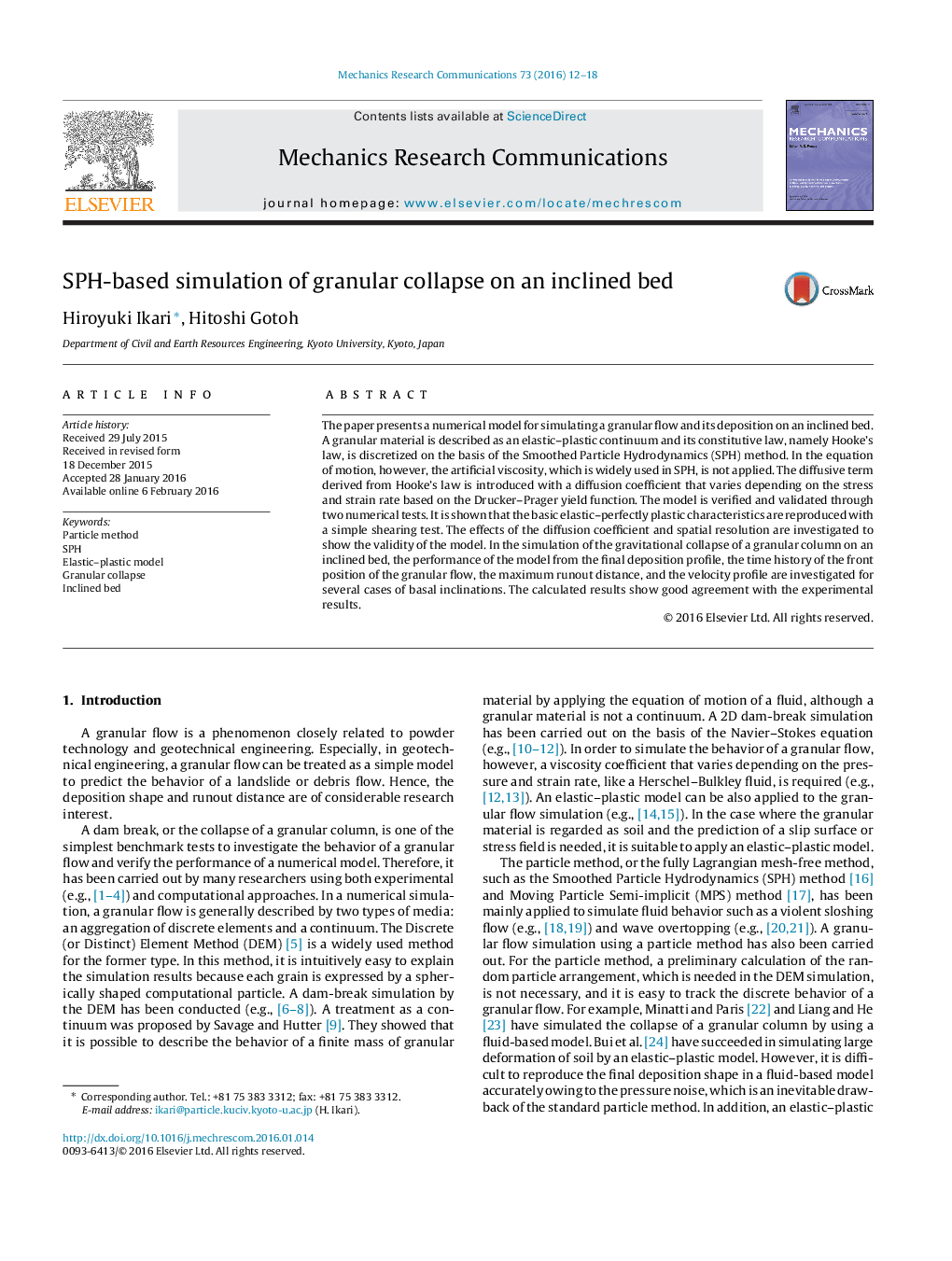| Article ID | Journal | Published Year | Pages | File Type |
|---|---|---|---|---|
| 801544 | Mechanics Research Communications | 2016 | 7 Pages |
•A dam break of the granular material on an inclined bed is simulated.•An SPH-based model using an elastic–plastic constitutive law is used.•A diffusive term is applied instead of the artificial viscosity.•A diffusion coefficient that varies depending on the stress and strain rate is adopted.•The deposition profile, the runout distance, and the velocity profile are investigated.
The paper presents a numerical model for simulating a granular flow and its deposition on an inclined bed. A granular material is described as an elastic–plastic continuum and its constitutive law, namely Hooke's law, is discretized on the basis of the Smoothed Particle Hydrodynamics (SPH) method. In the equation of motion, however, the artificial viscosity, which is widely used in SPH, is not applied. The diffusive term derived from Hooke's law is introduced with a diffusion coefficient that varies depending on the stress and strain rate based on the Drucker–Prager yield function. The model is verified and validated through two numerical tests. It is shown that the basic elastic–perfectly plastic characteristics are reproduced with a simple shearing test. The effects of the diffusion coefficient and spatial resolution are investigated to show the validity of the model. In the simulation of the gravitational collapse of a granular column on an inclined bed, the performance of the model from the final deposition profile, the time history of the front position of the granular flow, the maximum runout distance, and the velocity profile are investigated for several cases of basal inclinations. The calculated results show good agreement with the experimental results.
